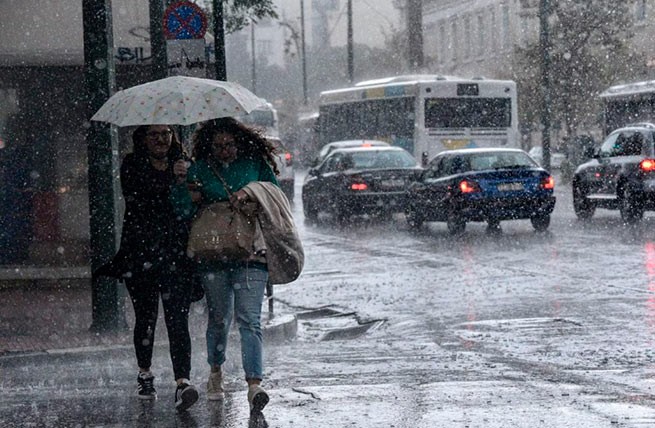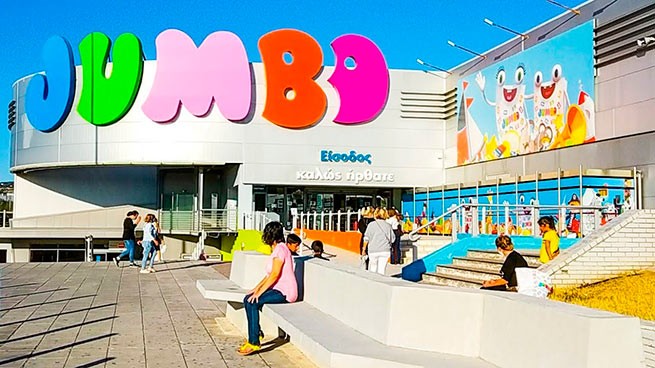Do you know that there is Constantinople in Ukraine? And that the city of Mariupol is named after the Virgin Mary? And that in our lands there was a man who led the people like Moses?
Orthodox Greeks of Donbass. How much do we know about them? And do we know anything at all? There is not much information about the appearance of Orthodox Greeks in the southeast of our country, but this was an epoch-making event for that time and became a part of our church history.
To this day, Greek surnames are often found in Donbass. These are the descendants of those Greek settlers who came to these steppes almost 250 years ago from the Crimea. During this time, the Greeks have significantly assimilated with the local population, so much so that they themselves have already become local. However, there are still settlements with a prevailing Greek population, the Greek language and traditions have not been lost here, the Greek names of the settlements have been preserved: Yalta, Urzuf, Mangush, Sartana.
Everyone knows the great master of landscape painting Arkhip Ivanovich Kuindzhi, a Greek by nationality, originally from the town of Karasu, Mariupol district. One of the outstanding Greek sailors was Admiral Mikhail Nikolaevich Kumani, an experienced naval commander during the Russian-Turkish war of 1828-1829. The scientist and the governor of Kiev in 1839-1852 were Greeks. Ivan Ivanovich Fundukley, the first rector of Kharkov University Vasily Nazarovich Karazin, educator and teacher Feoktist Avraamovich Khartakhai.
The Greeks were the famous test pilot of the first jet aircraft Grigory Yakovlevich Bakhchivaji, the hero of labor Pasha Angelina, test engineer, developer of the T-34 tank engine Konstantin Fedorovich Chelpan and many others. The most famous Greek of these places was Saint Ignatius of Mariupol, whose activity and ministry had a significant impact on the fate of the Greeks of the Donetsk steppes.
Monument to St. Ignatius of Mariupol, welcoming guests at the entrance to Mariupol from the side of Berdyansk. Photo: 0629.com.ua
Ancestors Mariupol Greeks before moving to the Azov region, they lived in the Crimea for two and a half thousand years. There they adopted Christianity from the first preachers and disciples of the apostles themselves. A long period of Ottoman rule in the peninsula brought the threat of Islamization and suppression of the Christians of Crimea. This concerned not only Greeks, but also Georgians, Volokhs, Armenians. Even now, Azov Greeks are linguistically divided into two groups: Rumey and Urum. From the Greek language, the word ρωμαιος is translated as “Roman” (Romans, Byzantines). “Urum” is the Turkish form of the ethnonym “ro (u) meos”. The first retained the dialect of the ancient Greek language, they lived in the Crimean villages, which were located to the east of the main Tatar centers, outside the zones of active political, trade and economic ties. The Urum were unable to preserve their native language and switched to the dialect of the Crimean Tatars.
The most interesting thing is that both of them profess Orthodoxy, consider and call themselves Greeks. Even a change of language could not change the inner and main self-identification of Christians. For the people of that time, religion was the basis of the worldview, faith united all Greeks, ensured organization and preservation of the remnants of the old Hellenic culture.
After the war of 1774, the Russian Empire began to think about the development of new possessions in the Azov region to strengthen the southern borders. For several centuries in a row, these vast steppe areas were dangerous for the Russian state because of the raids of the Crimean Tatars and Nogais. Therefore, Empress Catherine II decided to populate vast desert areas with colonists from the Crimea. Before the arrival of settlers from the Crimean peninsula, the area remained sparsely populated, and the land remained uncultivated. These places were called the Wild Field.
Photo: forum.gp.dn.ua
On April 23, 1778, on the day of Holy Easter, after the Liturgy in the Dormition Skete of Bakhchisarai, Metropolitan Ignatius announced to his flock an agreement with the Russian government. This news soon spread throughout the Crimea: it was unexpected (preparations for the resettlement were carried out in secret) and provoked resistance from the Khan, Murza, Tatar and even Christian population. No matter how great the Tatar and Turkish oppression that the Greeks endured in Crimea, not everyone wanted to leave their homes, from the blooming Crimea with a wonderful climate to unknown lands.
The move was headed by Metropolitan Ignatius of Gotha and Kafa. Saint Ignatius of Mariupol (in the world Jacob Gozadini) was born in 1715 in Greece on the island of Fermia (now Kinfos). He came from an old family that had moved to Greece from Italy and converted to Orthodoxy. To this day, on the island of Kinfos, there is a church in honor of Saint Sava, built by the ancestors of the saint. On Athos, he took monastic vows with the name Ignatius, received a spiritual education. Later he was ordained to the priesthood and after a while became a bishop. For some time in Constantinople he was a member of the Patriarchal Synclite. In 1771, after the repose of Bishop Gideon, the saint was ordained to the Gotfei-Kefai cathedra in the Crimea. In various documents, it is called the Gothic-Kefai, Gothic and Kafa, Gotfi-Kefai. The diocese was created in 1678, and Vladyka Ignatius was its last, twenty-fourth metropolitan.
The Bakhchisarai (Mariupol) icon of the Mother of God. The miraculous icon transferred by the Greeks during their resettlement was lost around 1918. Several lists have survived. Photo: tatmitropolia.ru
The beginning of the resettlement of the Orthodox Greek population from the Crimea to the Azov region continued for several years. Whole lines of carts and carts, drawn by oxen and horses, moved towards the Azov coast. Their national shrine, the ancient miraculous icon of the Mother of God (Odigitria) from the cave church in the village of Mayrum near Bakhchisarai (now the Assumption Monastery), the Christians took away with great precautions and under the protection of the Russian troops, since it was venerated by both the Tatar population and her tried to detain even on the way.
The people believed in Metropolitan Ignatius and together with him made a campaign, leaving eight cities and 66 settlements. In total, 31,386 people left the Crimean Khanate, among them Greeks – 18,408 people, Armenians – 12,598 people, Georgians – 219 people, Vlachs – 161 people.
Religion in the Russian Empire was more important than other features of the ethnographic group. The nomination “Crimean Christians”, or “Christians of the Greek law”, referred to all immigrants from Crimea, a small part of whom were registered and considered themselves Georgians or Wallachians. On behalf of the authorities, the commander of the Crimean corps, Lieutenant-General Alexander Vasilyevich Suvorov, supervised the resettlement. For the withdrawal of Christians, the future generalissimo was awarded the diamond star of the Order of St. Alexander Nevsky, and Metropolitan Ignatius was awarded great powers of clergy and a diamond star.
Old temples of Mariupol
In terms of population, it was a large part of the Christian population, up to about ten thousand Greeks remained in the Crimea, and the bulk of them eventually converted to Islam. Being Türkic-speaking for several generations before, they dissolved among the southern coast and foothill Tatars.
The Christians who came out temporarily settled in the Alexandrian fortress (now the city of Zaporozhye), in Yekaterinoslav, in the north of the Azov province. On the way and already on the spot in winter, the Greeks experienced great difficulties, a lack of clothing, food, dwellings prepared for wintering, the cause of which was illness that claimed the lives of a significant part of the settlers. Later they settled in new places on the Azov coast, founding settlements and giving them the same names as the villages in the Crimea, which they left.
The central point of their villages was the city of Mariupol. The city owes its name to the Mariampol Monastery, which until the exodus was the center of the spiritual life of the Crimean Christians of the Greek rite. Metropolitan Ignatius personally traveled around the Greek villages, examined his flock, laid churches in the villages. Himself or through the Greek priests, he persuaded the flock to take care of building churches more diligently, before houses and other buildings, because blessing and help to believers descend through the temples of God.
In the first year, the Greeks built several temples from local stone. Divine services were conducted in Greek, books and church utensils taken from Crimea were used. The first years after the resettlement from the Crimea to the Azov region, the Greeks constituted a special diocese and retained the specificity of the church rite, which was then brought into line with the requirements of the Synod.
Temples of the modern Azov region. Church of St. George, Sartan, St. John Chrysostom, Yalta, the temple of architect. Michael, Urzuf.
After the arrival of Crimean Greek Christians in the Northern Azov region, the main temple of Mariupol became the Holy Charalampievskaya Cathedral Church. It was consecrated on April 22, 1782. This stone church was located at the beginning of the main street of the city. There was no church in the name of Saint Charalampius in Crimea, and, according to legend, the Greeks made a vow to build a temple dedicated to this saint, to whom they turned for help during general illnesses during resettlement. In this church there was one of the miraculous icons brought by the Greeks from the Crimea – the image of the Holy Great Martyr George. The icon has survived to this day.
According to the testimony of his contemporaries, Metropolitan Ignatius was an intelligent, noble man, devoted to God and his people. He did his best to preserve the Orthodox faith and save the Greeks from assimilation. During the first development of Mariupol, its main founder, His Eminence Ignatius, did not have his own home. He lived on a par with the poorest of his fellow tribesmen in a wretched, gloomy, damp dugout. During resettlement, the Metropolitan was directly involved in the selection of places for the city and villages, indicated the places, built churches, was an intermediary between the state, the treasury and his flock in buying wood for the construction of houses and outbuildings.
In Mariupol, Metropolitan Ignatius founded: the Assumption Church, the Church of the Nativity of the Virgin, the Catherine Church and others. Unfortunately, many churches in Mariupol and the Azov region were destroyed during the Soviet era.
Shortly before his death, the saint drew up a will, in which he asked all the property collected for the construction of the monastery of St. George the Victorious (Vladyka intended to build a monastery), to distribute to individual churches and priests. Vladyka Ignatius departed to the Lord on February 3/16, 1786, his honest remains were buried in a church erected by him in honor of the holy martyr Charalampius.
Modern Greeks of the Azov region
In 1845, when the Charalampievskaya cathedral church was moved to a new place, the incorruptible relics of Metropolitan Ignatius were discovered in the burial vault under the old building. Then the venerable relics of the saint rested in the Catherine Church in Mariupol, and when the church was closed after the 1917 revolution, they ended up in the local museum of local lore. Here in 1941 they were discovered by pious Christians and transferred to the Mariupol Cathedral. In 1943, during the hostilities in Mariupol, the temple was bombed and burned down, and the relics of the saint stored in it were almost completely destroyed in the fire. What survived was collected in a small ark, which is still kept in the Nikolo-Preobrazhensky port church.
In 1997, Metropolitan Ignatius was numbered among the locally revered saints of the Ukrainian Orthodox Church.
The exodus of Christians from Crimea is one of the first large waves of essentially voluntary immigration of the population not only in Russia, but also in Europe in the middle of the 18th century. In fairness, it should be noted that the resettlement of the Crimean Greeks to Russia in 1778–1780 under the leadership of Saint Ignatius was not the only resettlement of the Greeks. Later, there were several more migratory waves in connection with later historical events. However, the first exodus of the Greeks to the lands of Donbass formed the ethnic and historical appearance of this region. Allowed to keep the faith for many thousands of people.
Now the descendants of the Greeks do not live as compactly in Ukraine as they did several centuries ago, they can be found in different cities and villages. Among them are our brothers and sisters who pray with us, and there are priests who celebrate the Eucharist in churches by God’s mercy.
In Christ there is neither a Hellene, nor a Jew, nor a Slav, as the Apostle Paul says, but it is always honorable to remember your kind, because this is not just history, but a spiritual connection between times and people.






More Stories
How teacher Ivan Kanidi, at the cost of his life, saved children at the Beslan school
Thessaloniki: Pontians are tried and deprived of Greek citizenship, they face deportation
How Greeks abroad can vote – step by step